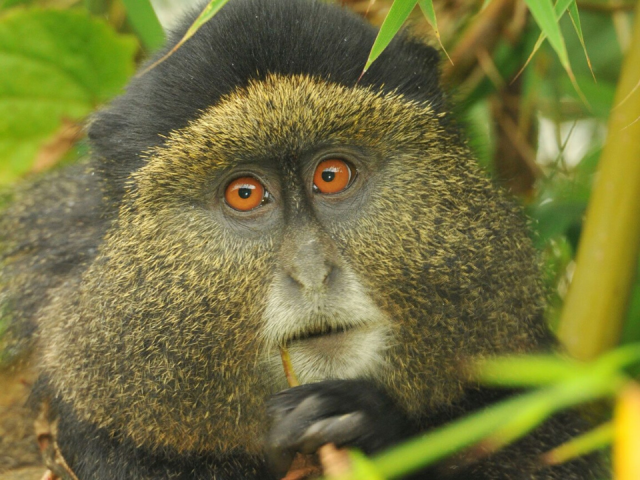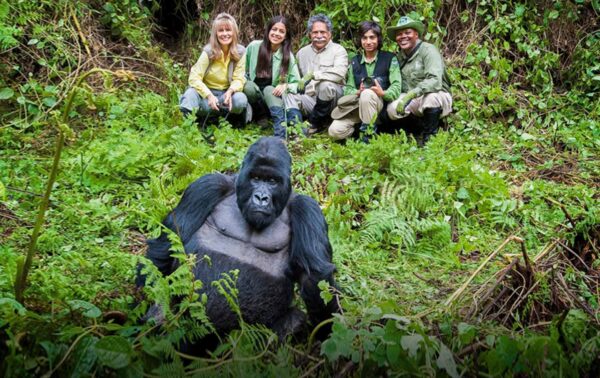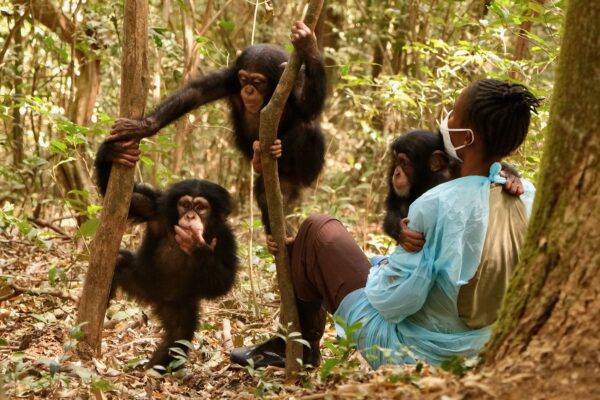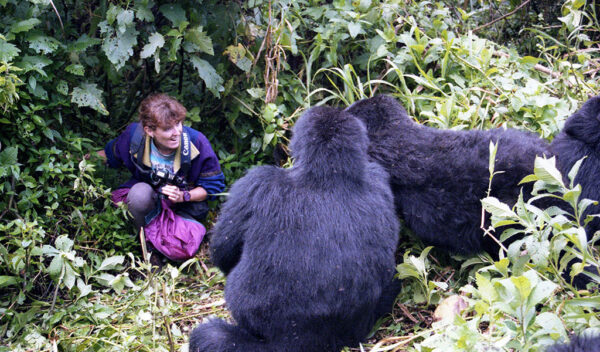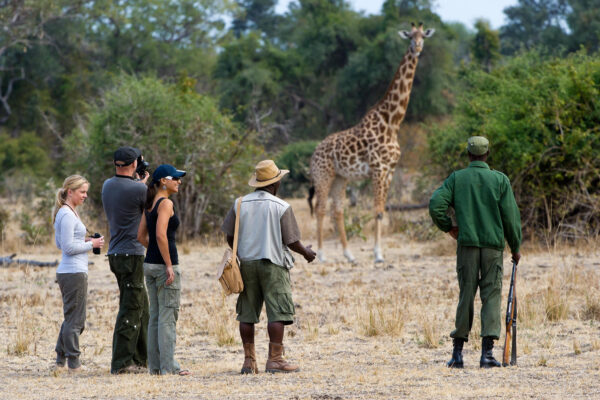
How Many Gorilla Families Can Visitors Track in Bwindi Impenetrable Forest?
November 20, 2025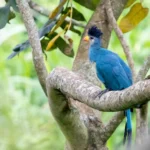
How Many Days Should I Spend on a Uganda Birding Safari?
November 21, 2025How Many Golden Monkeys Are Typically Seen on a Tracking Safari?
Many wildlife enthusiasts ask, “How many Golden Monkeys are typically seen on a tracking safari?” This question lies at the heart of planning a Golden Monkey Tracking Safari in East Africa. Golden monkeys are a rare and fascinating primate species endemic to the volcanic forests of Uganda and Rwanda. Often found in Volcanoes National Park in Rwanda and Mgahinga Gorilla National Park in Uganda, these small, vibrant primates captivate travelers with their distinctive golden-orange fur, social behavior, and lively movements.
Introduction: Discovering the Rare Golden Monkeys of East Africa
Renai Safaris specializes in providing well-organized itineraries that integrate Rwanda Gorilla Trekking Safaris, Uganda Gorilla Trekking Safaris, and other wildlife experiences such as Uganda Chimpanzee Tracking Safaris and Uganda Birding Safaris. For travelers seeking to maximize East African primate encounters, understanding the typical number of Golden Monkeys visible during a tracking safari informs expectations and enhances planning.
The question How many Golden Monkeys are typically seen on a tracking safari? is significant because sightings can vary depending on season, habitat, and group size. Unlike gorillas, which are usually observed in family groups of 10–20 individuals, Golden Monkeys live in larger, more mobile troops that can number from 20 to 50 individuals, occasionally exceeding 60 in optimal conditions. These numbers provide an exciting opportunity for wildlife photographers, primate enthusiasts, and conservation-minded travelers to witness the dynamics of social groups in lush montane forests. Combining this experience with Uganda Gorilla Trekking Safaris allows travelers to enjoy the contrasting encounters of arboreal primates and the iconic mountain gorillas, creating a full-spectrum East African primate adventure.
Understanding the Golden Monkey Habitat and Group Dynamics
When exploring “How many Golden Monkeys are typically seen on a tracking safari?”, it is essential to understand their natural habitat and behavior. Golden Monkeys inhabit high-altitude bamboo forests, often in the same regions frequented by mountain gorillas. In Rwanda Safaris and Uganda Safaris, particularly within Mgahinga and Volcanoes National Parks, these monkeys rely on dense bamboo and montane forests for food and shelter. The forest canopy and bamboo thickets, while offering safety from predators, also influence how many monkeys are typically visible at one time.
Golden Monkeys live in large, cohesive troops, displaying complex social behavior such as grooming, playful chasing, and coordinated foraging. Tracking a group may reveal smaller sub-groups within the main troop, making actual sightings vary. On a typical Golden Monkey Tracking Safari, travelers can expect to observe anywhere from 20 to 50 individuals, with some of the largest troops numbering 60 or more. Renai Safaris’ guides use their expertise to locate active groups, ensuring optimal viewing opportunities while minimizing disturbance to the animals.
These dynamics also affect safari planning. Combining a Golden Monkey Tracking Safari with Rwanda Gorilla Safaris or Uganda Gorilla Trekking Safaris requires consideration of terrain and timing. Both activities involve steep, mountainous treks, making physical preparation and proper guidance critical for maximizing both the viewing of Golden Monkeys and gorillas in the same region. By understanding group size and habitat, travelers gain a realistic perspective on what to expect, ensuring a rewarding and safe wildlife encounter.
Timing and Seasonal Influences on Sightings
Another important question to address is “How many Golden Monkeys are typically seen on a tracking safari?” in the context of timing and seasonal changes. The visibility and activity levels of Golden Monkeys can vary with the seasons. In both Uganda and Rwanda, the dry seasons, typically June to September and December to February, make tracking more predictable as foliage thins and food sources concentrate monkeys into smaller, more accessible areas. Conversely, during wet seasons, dense undergrowth and heavy rainfall can disperse troops, making sightings more challenging.
Renai Safaris carefully plans itineraries to align with optimal tracking conditions. This planning ensures that travelers maximize the likelihood of seeing the full range of a troop, sometimes capturing vibrant social interactions, including feeding, grooming, and play behaviors. Combining these excursions with Uganda Chimpanzee Tracking Safaris allows guests to compare primate behaviors across species, deepening their understanding of East Africa’s diverse primate ecosystems.
Seasonal considerations also affect the logistics of accessibility. Trail conditions in montane forests can become slippery or muddy during rainy months, and large troops may relocate temporarily depending on food availability. By incorporating seasonality into planning, guides enhance the experience, ensuring travelers can consistently encounter significant numbers of Golden Monkeys and gain insights into troop dynamics, rather than experiencing fleeting glimpses.
Tracking Techniques and Expert Guidance
When asking “How many Golden Monkeys are typically seen on a tracking safari?”, expert guidance is critical to maximize the number of sightings. Golden Monkeys are agile and often move quickly through the bamboo canopy, which can make unassisted tracking challenging. Renai Safaris employs highly trained local guides familiar with the daily routines, feeding areas, and social dynamics of known troops in Rwanda and Uganda.
Guides use knowledge of vocalizations, feeding sites, and movement patterns to locate entire troops efficiently, ensuring travelers experience larger groups rather than isolated individuals. On a typical Golden Monkey Tracking Safari, this expertise results in sightings of 20–50 monkeys, with the possibility of encountering entire troops when the conditions are optimal. Guides also ensure minimal disturbance to the monkeys, adhering to responsible wildlife tourism practices.
Additionally, guided tracking enhances the educational aspect of the safari. Travelers learn about conservation efforts, habitat preservation, and behavioral ecology, providing a deeper understanding of the species beyond mere observation. Combining these guided experiences with Rwanda Gorilla Trekking Safaris or Uganda Gorilla Trekking Safaris provides a comprehensive primate-focused adventure that spans both arboreal and terrestrial species, giving visitors a richer perspective on East African wildlife diversity.
Photographic Opportunities and Wildlife Observation
Travelers often wonder, “How many Golden Monkeys are typically seen on a tracking safari?” in the context of photography. The number of visible monkeys directly affects the quality of wildlife photography. Observing a troop of 20–50 Golden Monkeys offers ample opportunities to capture social interactions, individual expressions, and dynamic movement through bamboo forests. Renai Safaris ensures photographers and wildlife enthusiasts have the best vantage points for both individual and group shots without disrupting the natural behavior of the animals.
Photography-focused safaris are often combined with other East African wildlife experiences. For instance, combining Golden Monkey Tracking Safaris with Uganda Wildlife Safaris or Uganda Birding Safaris allows guests to capture multiple species in their natural habitats, from colorful birds in montane forests to primates and other wildlife. Similarly, a combination with Rwanda Gorilla Safaris offers contrast between the intimate, grounded gorilla experience and the lively, arboreal Golden Monkeys.
Professional guidance ensures that both casual photographers and advanced wildlife enthusiasts can observe and photograph as many monkeys as possible in a single session. This approach also emphasizes ethical wildlife observation, reinforcing Renai Safaris’ authority and reliability in providing responsible safari experiences.
Combining Cultural Experiences with Golden Monkey Tracking
Another question often posed alongside “How many Golden Monkeys are typically seen on a tracking safari?” relates to the human dimension of the safari. The forests and parks where Golden Monkeys live are home to communities with rich cultural traditions. In Uganda Cultural Safaris and Rwanda Safaris, travelers can engage with local communities, learn about traditional livelihoods, and understand the connection between people and wildlife conservation.
Combining Golden Monkey Tracking Safaris with cultural visits creates a holistic experience. Guests may participate in village tours, witness traditional dances, or explore local markets while learning about conservation initiatives that protect primate habitats. These experiences provide depth to the safari, turning it from a simple wildlife excursion into a broader cultural and educational journey. Adding Uganda Gorilla Trekking Safaris to the itinerary complements these encounters, offering travelers a multi-faceted exploration of both wildlife and cultural landscapes in East Africa.
Through these combined experiences, travelers gain insight into how local communities contribute to the protection of Golden Monkeys and gorillas, making the safari both meaningful and impactful.
Conclusion: Maximizing Sightings and Understanding Group Dynamics
In conclusion, travelers asking “How many Golden Monkeys are typically seen on a tracking safari?” should expect to see 20–50 monkeys, with opportunities for larger troop encounters depending on season, habitat, and expert guidance. Renai Safaris ensures that itineraries maximize sightings, provide rich educational context, and maintain responsible wildlife practices.
Combining Golden Monkey Tracking Safaris with Rwanda Gorilla Trekking Safaris, Uganda Gorilla Trekking Safaris, Uganda Chimpanzee Tracking Safaris, or Uganda Birding Safaris allows guests to enjoy a comprehensive East African primate experience. Visitors gain insight into troop behavior, forest ecology, and the broader conservation landscape. By integrating wildlife, cultural experiences, and expert guidance, Renai Safaris positions itself as a trusted authority for East African wildlife tourism.
Understanding typical troop sizes, seasonal behavior, and accessibility ensures travelers can plan realistically while enjoying the full splendor of these rare, vibrant primates. The combination of observation, photography, and cultural immersion makes the safari both educational and memorable, creating an East African adventure that is as diverse as it is breathtaking.

